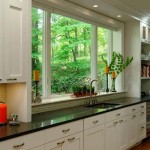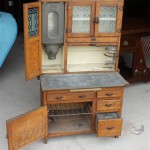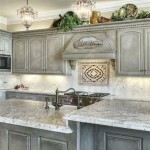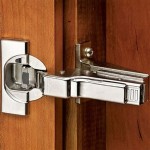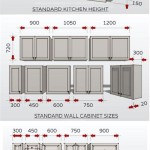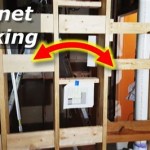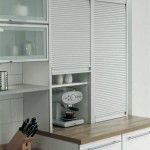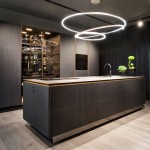Avoid any promotional context or advertisement.
Professional Spray Painting Kitchen Cabinets in Surrey: A Comprehensive Overview
Kitchen cabinets are a significant component of any home, influencing both functionality and aesthetics. Over time, cabinets can become worn, outdated, or simply no longer align with evolving design preferences. Rather than undertaking a complete kitchen renovation, many homeowners in Surrey opt for professional spray painting as a cost-effective and efficient alternative to refresh their kitchen's appearance.
Professional spray painting offers a durable, factory-like finish that is difficult to achieve with traditional brush or roller applications. The process involves meticulous preparation, surface treatment, and the application of specialized coatings using specialized equipment. This approach ensures a uniform, smooth, and long-lasting result that elevates the overall look and feel of the kitchen space. The demand for this service in Surrey arises from the region's diverse housing stock, ranging from older character homes to contemporary residences, each with unique cabinet styles and materials.
This article aims to provide a comprehensive overview of professional spray painting of kitchen cabinets in Surrey, detailing the process, considerations, and benefits associated with this popular home improvement option. It will delve into the key aspects of material selection, surface preparation, application techniques, and environmental considerations, offering valuable insights for homeowners considering this upgrade.
Key Considerations Before Committing to Spray Painting
Before initiating the spray painting process, several key factors must be carefully considered to ensure a successful outcome. These considerations encompass the type of cabinet material, existing finish, desired color and sheen, and the overall budget allocated for the project. A thorough assessment of these aspects will help determine the feasibility of spray painting and guide the selection of appropriate materials and techniques.
The type of cabinet material significantly impacts the preparation and painting process. Cabinets constructed from solid wood, such as oak or maple, typically require more extensive preparation, including sanding and priming, to ensure proper adhesion of the paint. Laminate or melamine cabinets, on the other hand, may require specialized primers designed to bond to non-porous surfaces. Understanding the material composition is crucial for selecting the appropriate coatings and application methods.
The existing finish on the cabinets also plays a vital role in the preparation process. Cabinets with a glossy or varnished finish must be thoroughly sanded to create a textured surface that allows the primer to grip effectively. Peeling or chipping paint should be removed entirely before any further treatment. Properly addressing the existing finish is paramount to preventing adhesion problems and ensuring a smooth, uniform surface after painting.
The choice of color and sheen is a matter of personal preference, but it's essential to consider the overall aesthetic of the kitchen and the desired mood. Lighter colors can brighten up a small kitchen, while darker colors can add a sense of sophistication. The sheen, ranging from matte to high-gloss, affects the durability and cleanability of the finish. Matte finishes are less reflective and can hide imperfections, while high-gloss finishes are more durable and easier to clean but can highlight any surface flaws.
Finally, establishing a budget is essential for determining the scope of the project and selecting appropriate materials and services. Professional spray painting services in Surrey vary in price depending on the size of the kitchen, the type of materials, and the complexity of the preparation required. Obtaining multiple quotes from reputable contractors is advisable to ensure a competitive price and a clear understanding of the services included.
The Spray Painting Process: A Step-by-Step Guide
The professional spray painting process typically follows a structured approach consisting of several key steps, starting with meticulous preparation and culminating in the application of multiple coats of high-quality paint. Each stage is crucial for achieving a durable and aesthetically pleasing finish that meets the homeowner's expectations. The process demands precision and attention to detail to achieve a factory-like appearance.
The initial step involves thoroughly cleaning the cabinet surfaces to remove any dirt, grease, or grime. This is typically accomplished using a degreasing cleaner followed by a rinse with clean water. Removing contaminants is essential for ensuring proper adhesion of the primer and paint. In some cases, a mild abrasive cleaner may be used to lightly etch the surface and further enhance adhesion.
Following cleaning, the hardware, such as knobs, handles, and hinges, are removed. Doors and drawers are typically detached from the cabinet frames to facilitate easier handling and spraying. Protecting surrounding areas, including countertops, appliances, and flooring, is crucial to prevent overspray and unwanted paint exposure. This is achieved through the use of masking tape, drop cloths, and plastic sheeting.
Sanding is a critical step in the preparation process. The cabinet surfaces are sanded to create a smooth, uniform surface and to improve adhesion. The grade of sandpaper used depends on the type of cabinet material and the existing finish. For glossy surfaces, a coarser grit sandpaper may be necessary to break the sheen and create a textured surface. The sanding dust is then thoroughly removed with a tack cloth or vacuum cleaner.
Priming is essential for providing a uniform base for the paint and for promoting adhesion. The type of primer used depends on the type of cabinet material and the desired finish. Oil-based primers are typically used for wood cabinets, while specialized primers are available for laminate and melamine surfaces. The primer is applied in thin, even coats using a sprayer or brush, ensuring that all surfaces are adequately covered. The primer is allowed to dry completely before proceeding to the next step.
The actual spray painting process involves applying multiple thin coats of paint using a high-quality spray gun. The paint is typically thinned to the appropriate consistency to ensure a smooth, even application. The sprayer is held at a consistent distance from the cabinet surface and moved in a smooth, overlapping motion to avoid runs or drips. Multiple coats are applied, allowing each coat to dry completely before applying the next. This technique ensures a durable and uniform finish.
Once the paint has fully dried, the protective masking is removed, and the hardware is reinstalled. The cabinet doors and drawers are carefully reattached to the frames, ensuring proper alignment and functionality. A final inspection is conducted to identify and address any imperfections or touch-ups that may be required.
Types of Paint and Equipment Used in Professional Spray Painting
The selection of appropriate paint and equipment is paramount to achieving a professional-grade finish when spray painting kitchen cabinets. Different paint formulations offer varying levels of durability, adhesion, and aesthetic appeal. Similarly, the type of spray equipment used can significantly impact the quality and efficiency of the application process.
Several types of paint are commonly used for spray painting kitchen cabinets, each with its unique characteristics and benefits. Acrylic latex paints are water-based and offer excellent durability, color retention, and ease of cleaning. They are also low in VOCs (volatile organic compounds), making them a more environmentally friendly option. Alkyd paints, also known as oil-based paints, provide a hard, durable finish and excellent adhesion but have a higher VOC content and require more specialized cleanup. Conversion varnishes are a two-part system that offers exceptional durability and resistance to chemicals and moisture. They are often used in high-end kitchens and require specialized application techniques.
The choice of paint also depends on the type of primer used. It's essential to select a paint that is compatible with the primer to ensure proper adhesion and prevent compatibility issues. Consulting with a paint specialist or professional contractor is advisable to determine the best paint and primer combination for a specific project.
The type of spray equipment used also plays a crucial role in the outcome of the spray painting process. Airless sprayers are commonly used for larger projects and offer a high level of efficiency and control. They atomize the paint using high pressure, creating a fine, even spray pattern. HVLP (high volume, low pressure) sprayers use a lower pressure to atomize the paint, resulting in less overspray and a more controlled application. They are often used for smaller projects and for applying delicate finishes. Aerosol spray cans can be used for small touch-ups or for painting intricate details but typically do not provide the same level of control and durability as professional spray equipment.
In addition to the spray gun, other essential equipment includes air compressors, hoses, filters, and safety gear. A properly sized air compressor is necessary to provide a consistent air supply to the spray gun. Hoses should be durable and flexible to allow for easy maneuverability. Filters are used to remove contaminants from the air and paint, ensuring a clean, uniform finish. Safety gear, including respirators, eye protection, and gloves, is essential for protecting the painter from harmful fumes and overspray.
Proper maintenance of spray equipment is crucial for ensuring optimal performance and extending its lifespan. This includes cleaning the spray gun and hoses after each use, replacing worn parts, and storing the equipment in a dry, clean environment. Regular maintenance will prevent clogging and ensure that the equipment operates efficiently and reliably.

Kitchen Cabinet Painters In Surrey Ultimate Décor

Spray Painters In Surrey South London Ultimate Décor

Spray Paint Surrey Look At This Kitchen Transformation

Kitchen Spraying Respray Surrey Spray Painters

Zoom Spray Painters Surrey Mobile Spraying Painting On Site

Spray Painting Interiors About Portal

Kitchen Cabinet Painters In Surrey Ultimate Décor

Kitchens Colourspray

Kitchen Spray Painting The Facelift Company

Kitchen Spray Painting
Related Posts

